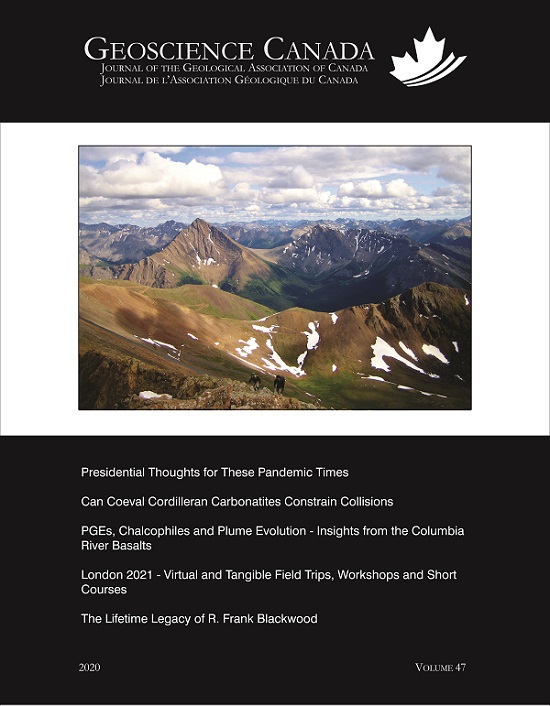Publié-e 2020-12-18
Mots-clés
- Columbia River Basalt Group,
- Chalcophile Elements,
- Flood Basalt,
- Platinum Group Elements
Comment citer
Résumé
Le groupe basaltique du Columbia est une grande province ignée continentale. Il s’agit de la plus jeune et la mieux préservée au monde. Les 210 000 km3 de laves basaltiques ont été émis entre 16,6 et 5 Ma dans le Nord-Ouest Pacifique, aux États-Unis. Le pic des éruptions s’est produit sur une période de 700 000 ans lorsque près de 99% des basaltes comprenant les basaltes de Steens, Imnaha, Picture Gorge, Grande Ronde et Wanapum ont été mis en place. Dans cette étude, nous avons examiné les éléments du groupe platine (EGP) Pt et Pd, et les éléments chalcophiles Cu et Zn dans le groupe basaltique du Columbia. La présence de Pt, Pd et Cu dans les basaltes de Lower Steens, Imnaha et Picture Gorge, de composition primitive, suggère que le magma du groupe basaltique du Columbia était une source fertile pour ces éléments. Les EGP sont principalement contenus dans les sulfures des formations les plus anciennes en fonction de leur corrélation avec les sulfures non miscibles, les minéraux sulfurés et les éléments Les basaltes de Grande Ronde, de Wanapum et de Saddle Mountains sont appauvris en EGP et en éléments chalcophiles par rapport aux formations antérieures. Le soufre était saturé dans de nombreux écoulements et une grande partie provenait probablement de l’assimilation des roches cratoniques d’une lithosphère amincie. Nous proposons un modèle où la présence ou l’absence d’EGP et d’éléments chalcophiles résulte principalement de l’interaction entre une tête de panache en progression et la croûte / lithosphère rencontrée. Les premières laves ont été émises à partir d’un panache qui avait peu d’interaction avec la croûte / lithosphère et étaient fertiles. Cependant, à mesure que la tête du panache avançait vers le nord, elle a assimilé du matériel crustal / lithosphérique, et le magma a été appauvri en EGP et en éléments chalcophiles. Le peu d’EGP et d’éléments chalcophiles restant dans les écoulements de basalte de composition évoluée et appauvrie de Grande Ronde ont été principalement contrôlés par la substitution dans les minéraux du basalte et n’étaient pas disponibles pour l’inclusion dans les sulfures.
